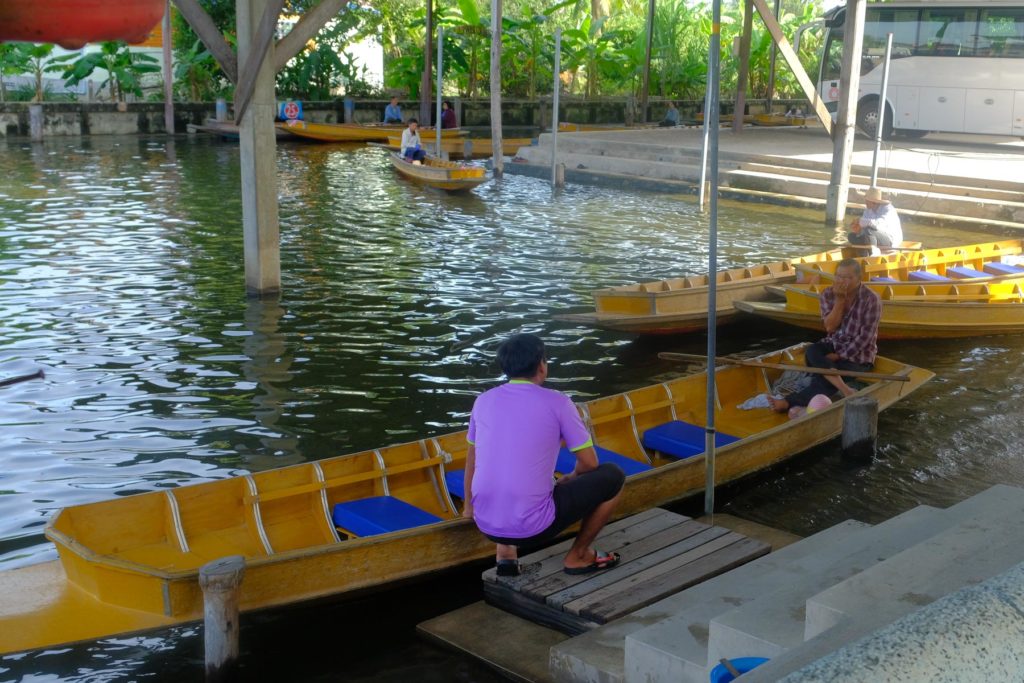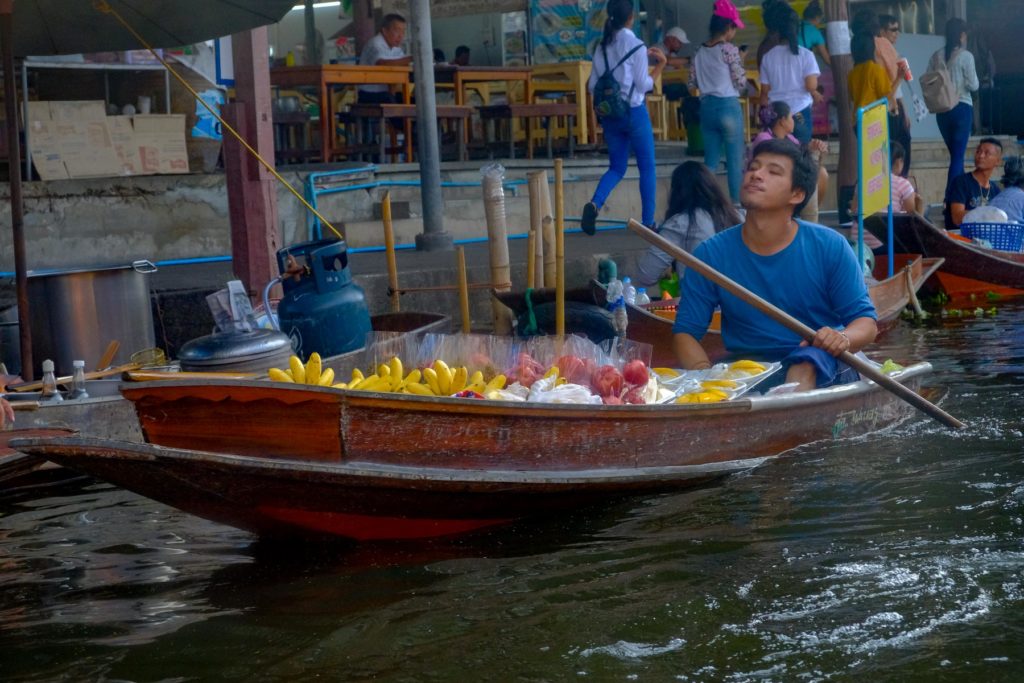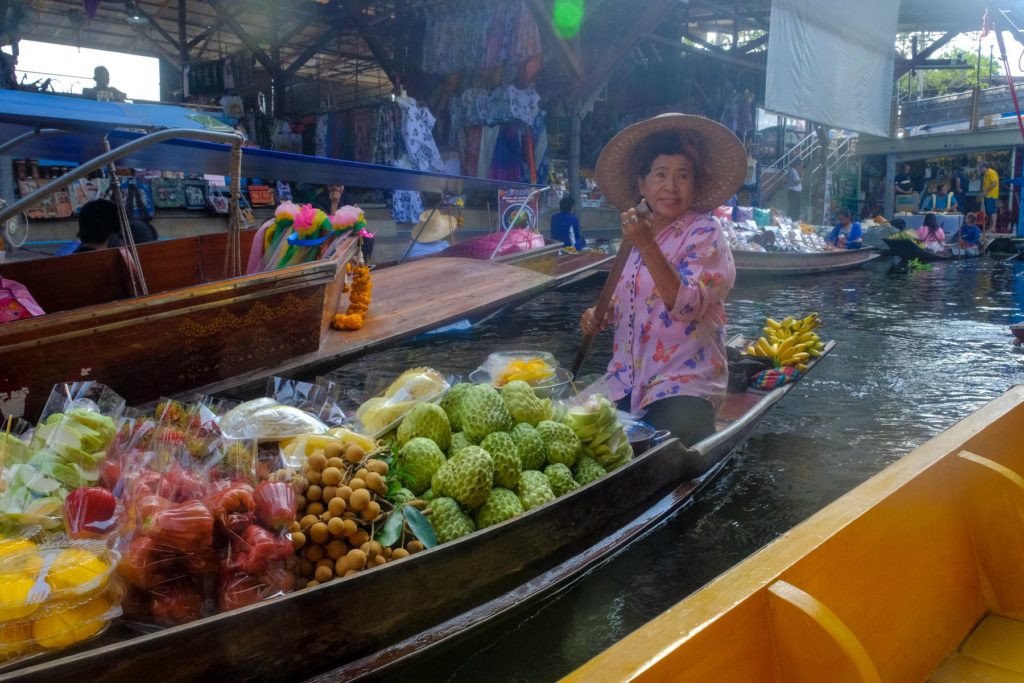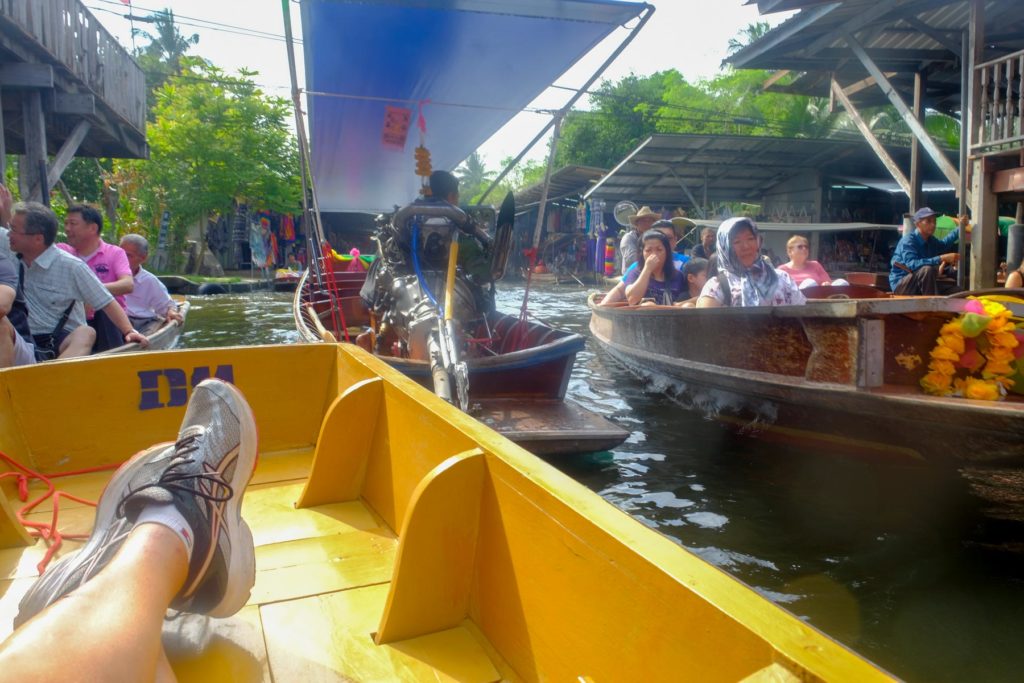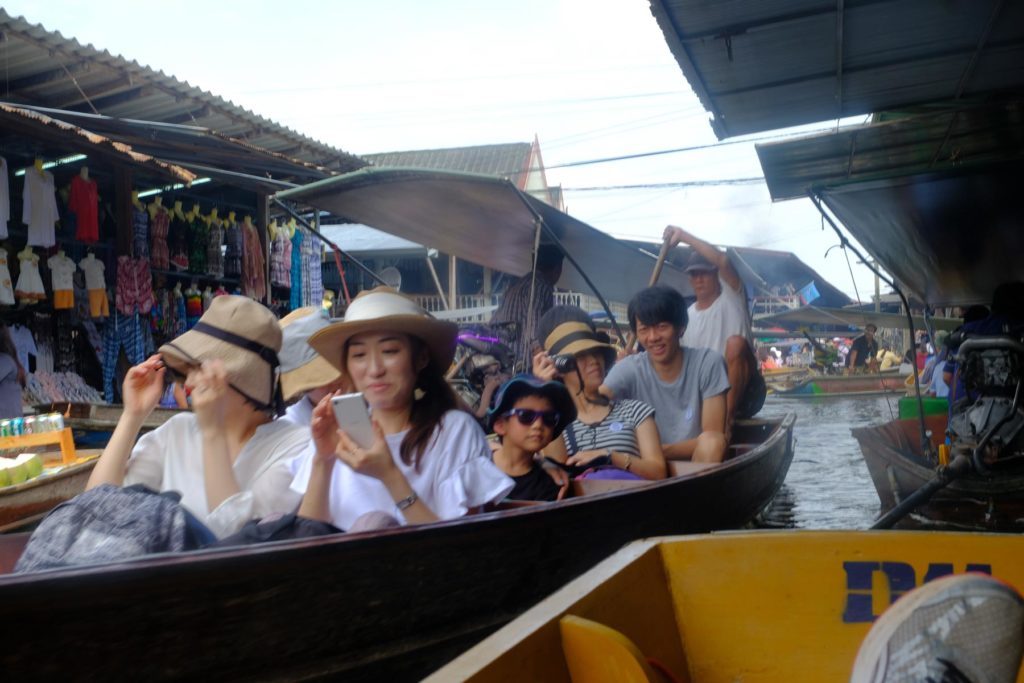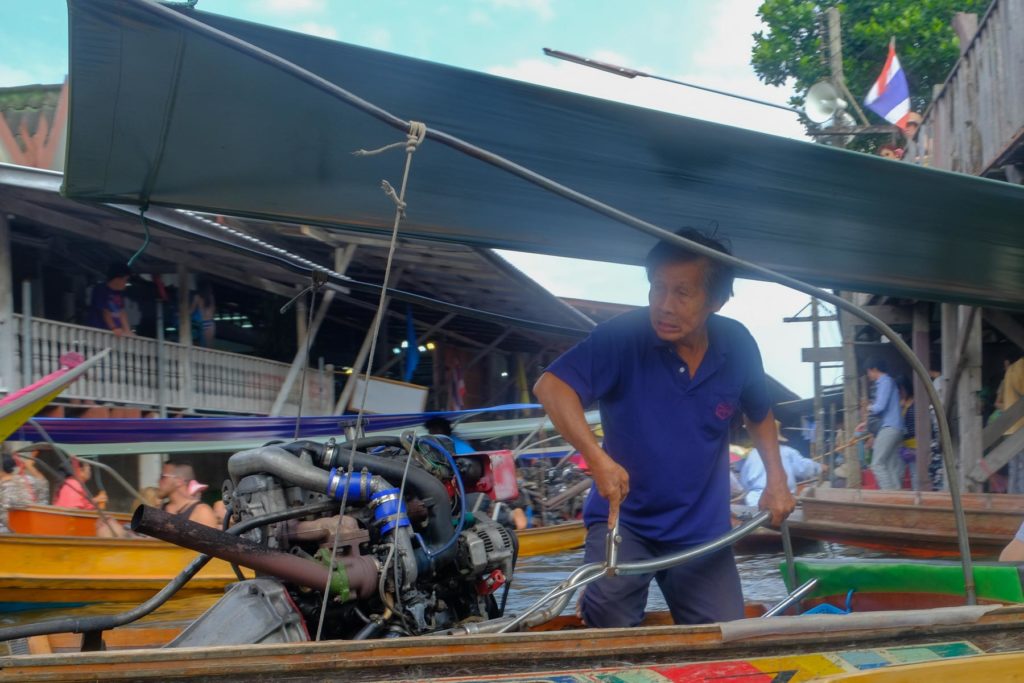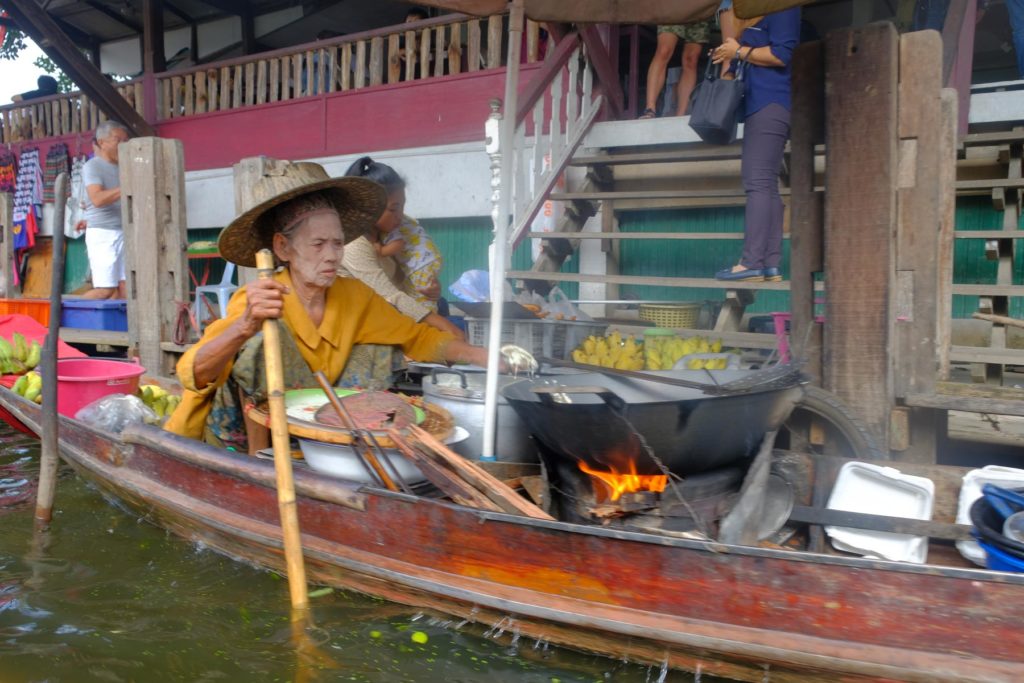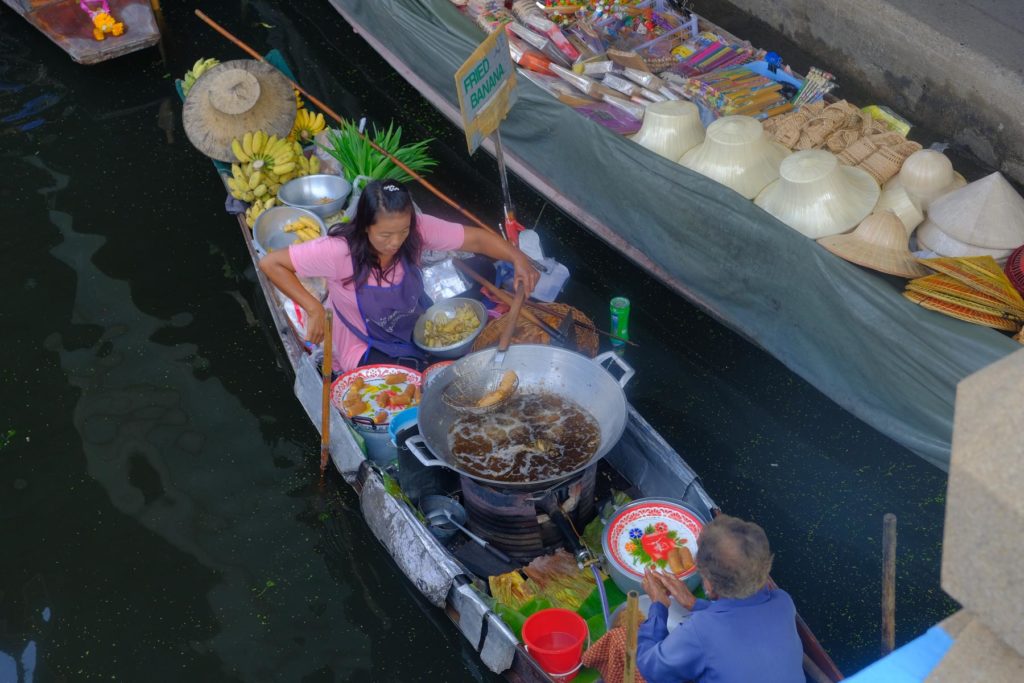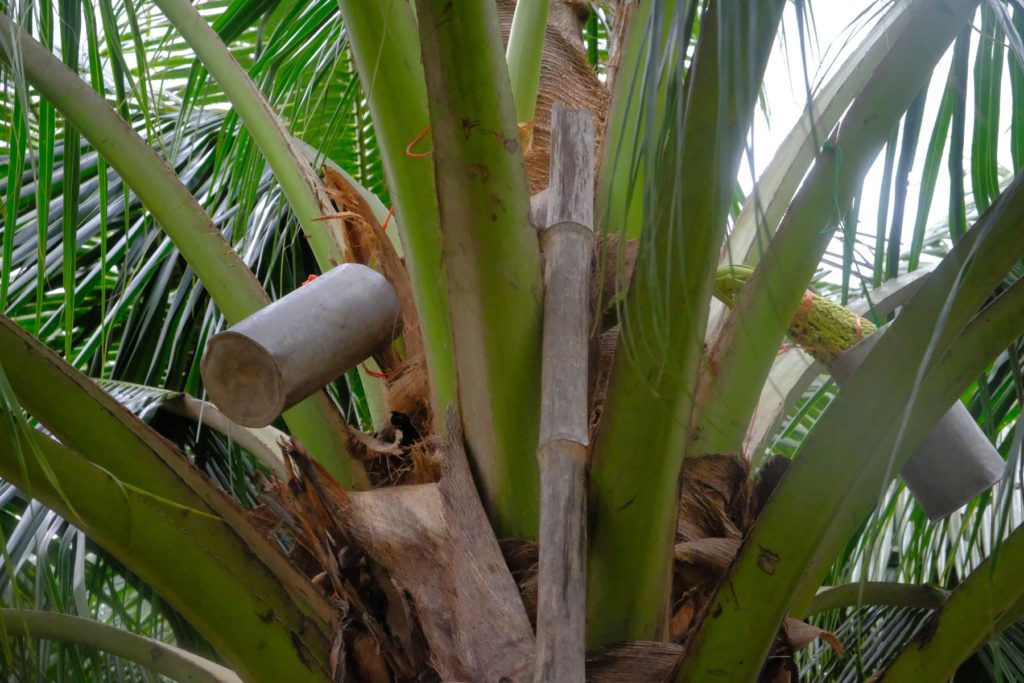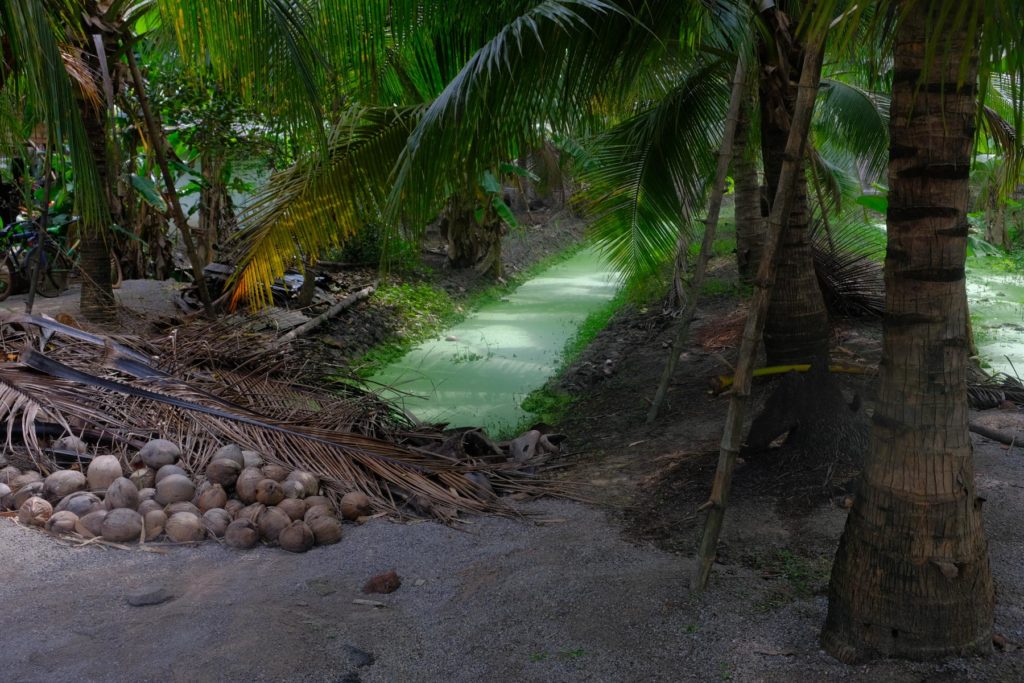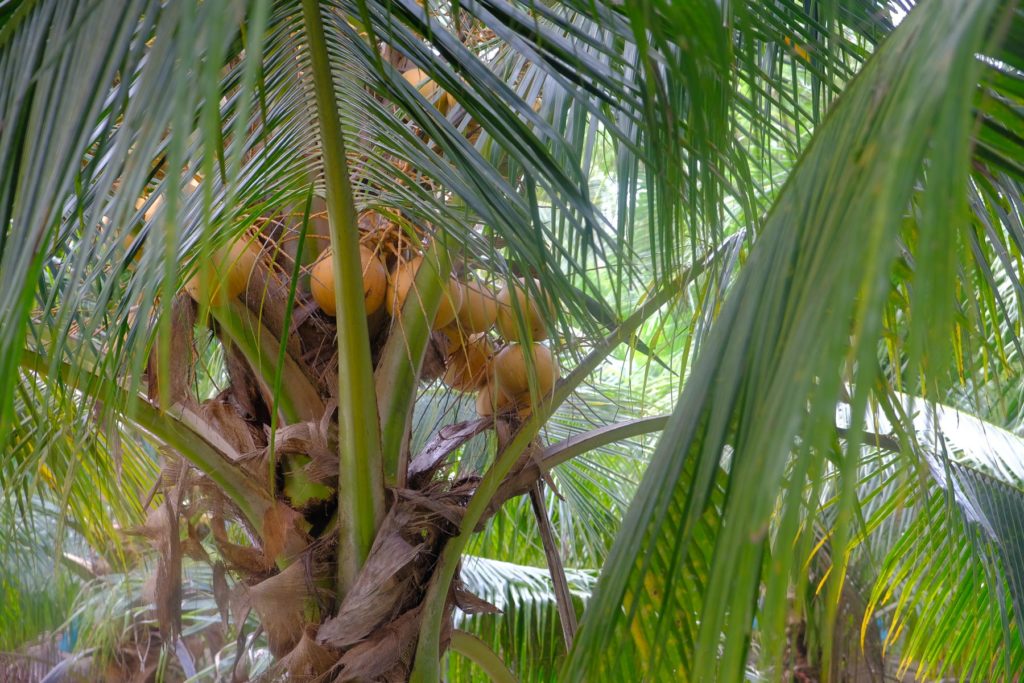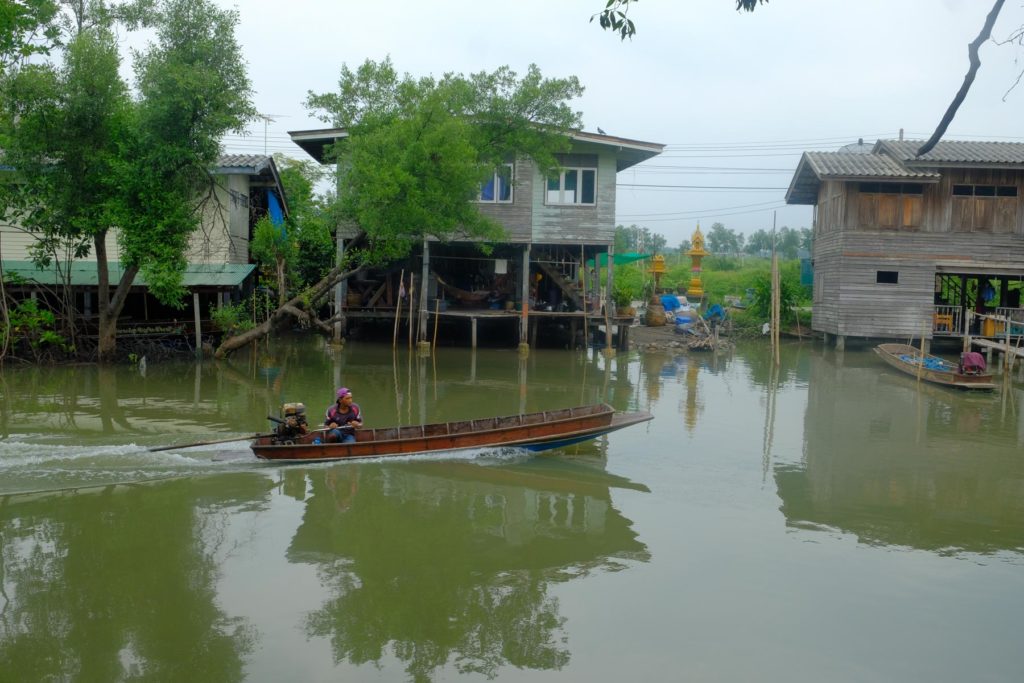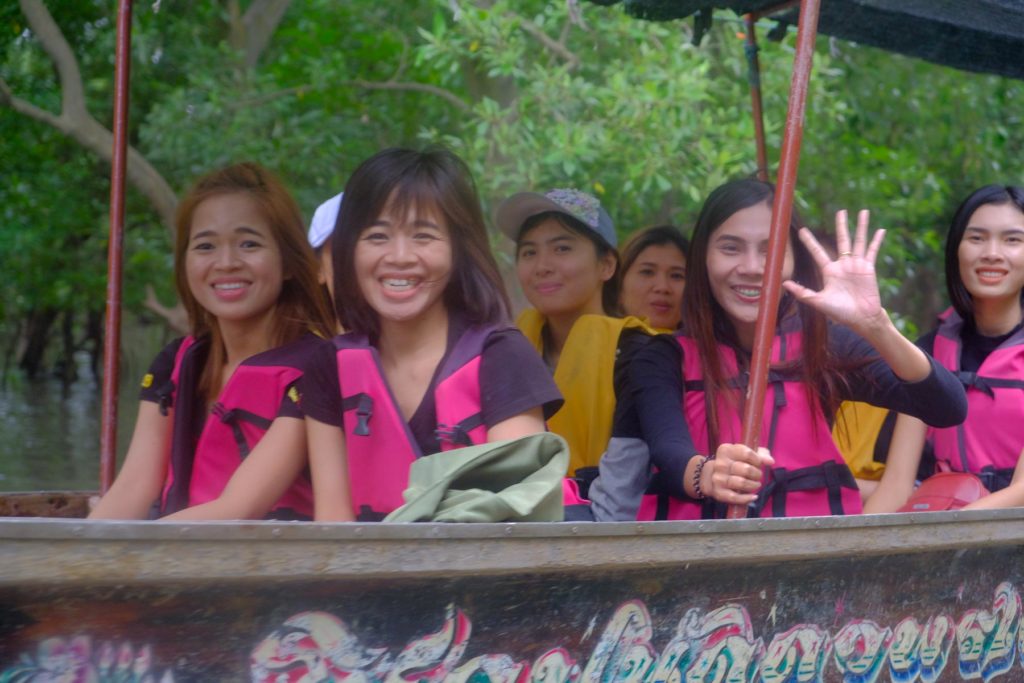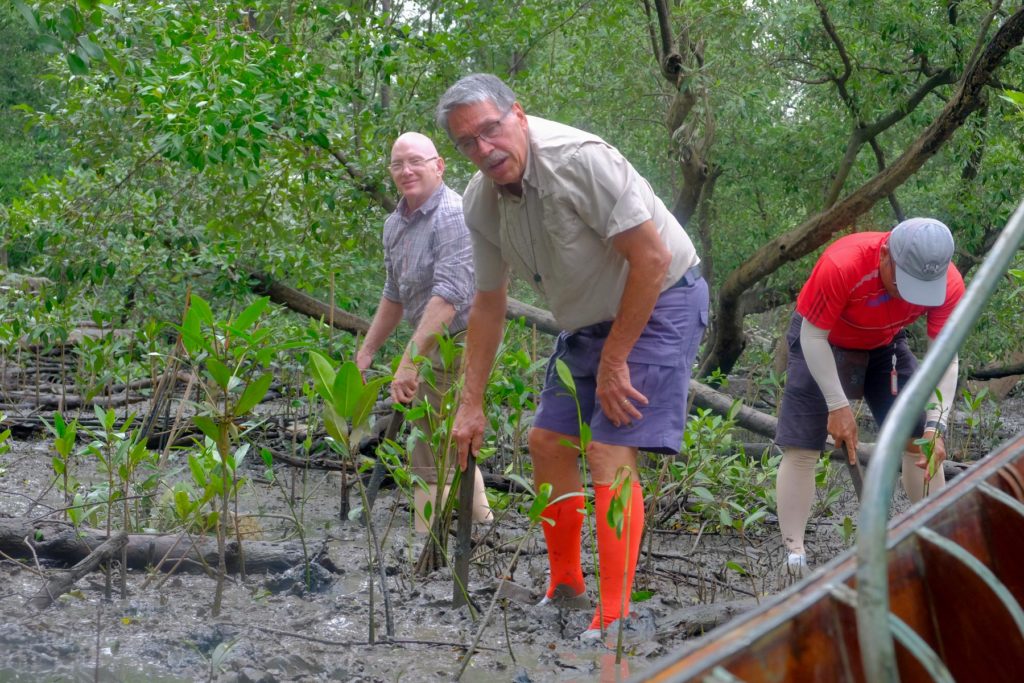I don’t recall it being enumerated in Dante’s Inferno, although truth be told I kinda spaced out after the third circle. But they’ve come up with the perfect punishment for me. First, they loaded me into a Samoan (paddles, not powered) and being the last passenger I got the seat in the bow – the one with no place to put your feet except right straight out. It accentuated the pain in my arthritic hip to a degree unequaled since Torquemada. Second, scrunched into the torture chamber they paddled us through the Floating Market, a sampan-based shopping mall. The canal is about four sampans wide with seller sampans on either side and four to six tourist sampans vying for space. Vendors with hooked poles grab your sampan by the funnel so you can view the goods and bargain.
Judy, bless her soul, helped by putting her knees up behind me so I could lean back.
So there you have it: physical pain and shopping pain. To make it even worse, one of our number stopped at each seller and tried to bargain over some doo-dad or other, thereby prolonging the agony.
And when I say “bargain” I mean bargain. Our first purchase was a set of big, fat, coconut-wood crayons. The guy asked 650 Bhats. I, jokingly, hit him with a lowball 300 to get things going. He immediately said, “Done” and bagged the crayons before I realized I had just paid $US 9.
I did better when we bought a scarf for Judy. The sales gal opened the bidding at 1,250 Bhat. I reached into my pocket and counted out my last crumpled Bhat notes: 250 (about $7.50). She countered several times but each time I shrugged my shoulders and soon enough the scarf was in the bag and we were broke, Bhat-wise.
“A fool and his money are soon parted,” is a universal truth.
The floating market is in a small province (population 650,000) of Samursongkram located about an hour and a half’s drive from our hotel in Bangkok. It is located on the Bay of Thailand, which connects to the South China Sea. The market has two functions. Early in the morning all the sampans are loaded with fish and vegetables for sale to the locals. Then they quickly convert to tourist trinkets in time for the first bus from Bangkok.
Next up: a visit to a coconut plantation. Coconut tress like brackish water, which this region has in abundance. Coconut trees can be harvested in one of two ways. One is to collect ripe coconuts and use the milk and meat as food. The other is to slash the coconut flower before the coconut starts to form, attach a receptacle to catch the sap and boil the sap to make brown sugar. When the tree gets too tall to harvest conveniently it is cut down and the wood used for furniture and other wood products. Coconut boils down in a ratio of about 3.5:1, sap to sugar. Maple syrup, by contrast, boils down 40:1 and then you only have syrup, not sugar.
Squirrels are the coconut growers’ enemies. They love to gnaw a hole and drink the sap. Fortunately there is a natural predator to control squirrels: the Burmese Python of which there are plenty. Our host, the grove owner, had a 9-year-old 120-pound beauty. I regret missing the chance to get my picture taken with him (the python, not the owner) wrapped around my neck.
Lunch was mostly seafood, as you’d expect in a fishing village, including shrimp and a local white fish. Very good.
The finale was a trip by long tail boat, the long narrow one with a big engine hanging on the rear. It’s a real muscle machine; the pilot doesn’t set the throttle and go, he is continually revving the engine up and down: Vrooooom, Vrooom, Vrooom. Gotta have one for Onawa next year!
Some time back a government of Thailand (not sure if it was military or civilian) set as a goal that Thailand would become second in Asia only to Japan (this was clearly before China made its move to #1). Some bright individuals said, “Hey, we need more farm land. Let’s cut down all the mangrove trees to make room.” The net result of this (mostly illegal) activity was to decimate the shorelines in this part of Thailand. To recover, an ecology movement is replanting mangroves along the canals and backwater areas of the bay. It’s very much like Florida in that people now recognize the ecological value of a healthy mangrove system to spawn fish and protect against flooding.
Naturally enough, I was one of two in our group who volunteered to help out. I put on a pair of knee-high socks with padded soles to protect my tootsies from who knows what. Then we got out into a mud bank; we sank in a good 6 – 9 inches with every step. We used a stick to make a hole, poked a mangrove shoot into the hole and tamped it down with our feet. We managed the job without embarrassment.
So now my grandkids can bring their kids to Thailand someday and show them where Great Grampa planted his mangrove trees.
Tomorrow we’re off to Luang Prabang, Laos. Six AM wake up call and an afternoon of touring so it’ll be another busy day.
This marks our halfway point. We’ve completed 15 out of 30 days, six out of 12 flights, three out of six countries and five out of 10 hotels. Onward!

